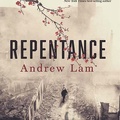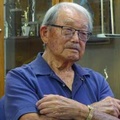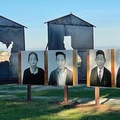Yoshinori H.T. Himel, called “Toso” for his middle name by his many friends, would like to see the word “internment” stricken from common usage. He said it distorts history.
“I’d like to see it (internment) used correctly,” Himel said. “It’s been used as a euphemism for a race-based incarceration of Japanese Americans.”
On Oct. 29 Himel was honored by the Sacramento Bar Association as “Pro Bono Attorney of the Year,” an attorney who takes cases without a fee for reasons of idealism and the pursuit of justice.
Internment, the word for the imprisonment of mostly American citizens of Japanese descent during World War II for no reason other than ancestry; Himel agreed the word seems almost legitimate—which it was not.
It almost seems humane, which it was not.
Thousands of people robbed of their livelihoods and property, herded into camps in desolate remote areas where they often suffered in freezing harsh winters and blazing heat in summer, without adequate medical care. Some couldn’t stand the shock and died. Others committed suicide.
Himel said the word internment should be called what it really was, a “concentration camp” for Americans of Japanese heritage.
It took the U.S. Government 40 years to admit the obscenity of the camps was wrong.
The lives of innocent people were ruined.
One of them was Himel’s grandfather, Juro Shiga. He died of a broken heart.
“I think that’s what killed him,” Himel said. “He (Shiga) had been a patriarch before the war. It (imprisonment) was too much of a come-down.”
Shiga was born in 1884 near Kumamoto in the South of Japan and immigrated to the U.S. in 1904 where he established a small knitting factory in Seattle.
“They were knitting sweaters,” Himel said. “My grandfather became a leader in the Japanese American business community.”
Shiga married his wife Sumi (maiden name Hirano) and had several children.
In January 1942, even before Executive Order 9066 signed by President Franklin D. Roosevelt on February 19 ordered the forcible removal of 120,000 people of Japanese descent on the West Coast from their homes; there came the knock on the Shiga family door.
“It was FBI agents,” Himel said. “They took him (Shiga). His wife had passed away. The family and children were not told where he was being taken. He was taken to a U.S. Justice Dept. prison camp in Bismarck, North Dakota.”
U.S. Dept. of Justice (DOJ) prisons differed from a dozen larger prison camps some that became notorious like Tule Lake in Northeastern California, Heart Mountain in Wyoming and Gila River in Arizona. DOJ prisons held smaller numbers of prisoners and specialized in holding non-citizens.
The prisoners sent to the major camps like Tule Lake were arrested under a newly created federal agency called the War Relocation Authority (WRA).
Himel said his grandfather had wanted to become a citizen, but the authorities wouldn’t let Asians do so under federal law.
DOJ prisons also held German prisoners, although the great majority were Japanese. Shiga’s prominence in the Japanese American business community in Seattle had made him a prime target.
“They (DOJ) were very selective, and Juro Shiga had status as a leader,” Himel said. “This is what marked him.”
Some Japanese Americans saw what was coming and abandoning their jobs and property on the West Coast, avoided imprisonment by moving inland to the Midwest (Chicago) and other parts of the country.
Shiga wrote two letters to the U.S. Attorney General (Francis Biddle) protesting his imprisonment and asking to be set free. The U.S. Government released him from the DOJ camp, but declared that he had been paroled as though he was a convicted criminal.
His terms of release dictated he report to law enforcement officers where ever he went. He was prohibited from moving back to Seattle.
“He got out of the DOJ camp, but he was not free,” Himel said. “He could not move where he wanted, he had no assets. He went to Chicago, then the Mississippi Gulf Coast, and then to the Maryland-Pennsylvania border. He moved in with his daughters.”
Shiga was 60 years old and was dependent on his daughters and their husbands. Two daughters had a GI (U.S. soldier) for a husband. One was Himel’s father.
Shiga took up residence with Himel’s parents, his father William and his wife Sakiko near Fort Ritchie, in Waynesboro, Maryland.
Himel’s father was an Anglo and his wife of Japanese heritage.
Fort Ritchie was the site of a military intelligence school. William Himel served in the U.S. Army teaching soldiers instructive courses about the order of battle of the Japanese Army, how it was organized and operated. He also spoke fluent Japanese.
“Before the war my father was in college at Northwestern University (Chicago). A professor from Japan predicted a war was coming and told my father he could best serve his country by learning the Japanese language,” Himel said.
William Himel entered the U.S. Army specializing in languages. He would continue after the war teaching the Japanese language and also doing work for civilian and federal government agencies translating documents.
Shiga did not survive the war.
He died of what was described as an apoplexy in Waynesboro in the spring of 1945. Himel has no doubt it was the experience of the camp and his grandfather’s loss of status that killed him.
Himel was born in Waynesboro later that fall after his grandfather’s death. He and his parents later moved to Washington D.C. where he spent his boyhood.
“I was an average kid, a Hapa (mixed race),” Himel said.
Himel decided he wanted to become a lawyer after a time spent learning Spanish in Mexico. He had achieved a bachelor’s degree in math from Harvard, then a master’s degree in sociology from the University of Michigan. He received his law degree in 1975 and passed the bar at the University of California, Davis.
“I became a lawyer because I wanted to do people justice,” Himel said.
Himel was the founding president of the Asian Bar Association representing Asian Americans and attorneys of Asian heritage. He said prejudice against Asian Americans continues in some forms today, most recently with the advent of the COVID-19 pandemic.
“Anyone with an Asian face can get typed as Chinese,” Himel said. “There’s been some hostile-phobic reaction against Asians as the source of the (COVID) infection.”
Himel is married with a son Carl, today an attorney for the American Civil Liberties Union (ACLU).
His wife, Barbara Takei is chief financial officer for the Tule Lake Committee, a San Francisco-based nonprofit tasked with preserving the site of the Tule Lake Relocation Center and educating the public about it.
Located near the Oregon/California border in Siskiyou County, today a national monument, Tule lake is infamous as the camp where those deemed by authorities as “trouble makers” and those who protested their illegal imprisonment were kept.
“It’s a very American thing to protest wrong,” Himel said.
In 2015 Himel and Barbara Takei led a national movement to prevent the sale of artifacts collected from camps that were going up for sale in an auction conducted by Rago Arts and Auction Center in New Jersey. The outcry generated led the auction house to cancel the auction. Most of the items went to the Japanese American National Museum in Los Angeles instead.
Among the items that would have been sold was a photo of Himel’s mother working at a machine in a Chicago photo finishing plant, and a cigarette holder made of string once used by Takei’s mother along with her ID card.
Much of Himel’s time in recent years has been spent defending the Tule Lake Committee in court against attempts to encroach on the historic site of the camp by potential developers.
In one case, Himel and fellow attorneys Mark Merin and Paul Masuhara opposed land acquisition at the camp site by an Oklahoma Native American Indian tribe whose members wanted to build on the property and install businesses.
“The Modoc (Indian) Nation sued us; then they wanted money for attorney fees in the case,” Himel recalled. “Instead we were granted the fees.”
The case was dismissed.
Himel said development at the Tule Lake site could destroy its historical importance and its serving as a lesson to prevent what happened from happening again.
He said use of the word “internment” needs to be corrected. In an article published in 2016 in the Seattle Journal for Social Justice, Himel said internment is a legal term that does not apply to mass incarceration.
“It (internment) is an action against selected subjects of an enemy nation, including alien civilians and prisoners of war,” the article stated. “The Enemies Alien Act provides for the internment of subjects of a hostile nation at least 14 years old as alien enemies.”
The Enemies Alien Act was originally passed at the country’s founding in 1798 and was ratified again in 1918.
“The most sizeable wartime action against Japanese Americans imprisoned an entire community defined by their race, not their citizenship,” the article continued. “Two-thirds were American citizens. The WRA operated concentration camps, not internment camps.”
All of these efforts Himel said have a common goal.
“To protect the history so future generations can be educated about what happened,” he said.
*This article was originally published on Nikkei West.
© 2020 John Sammon / Nikkei West






